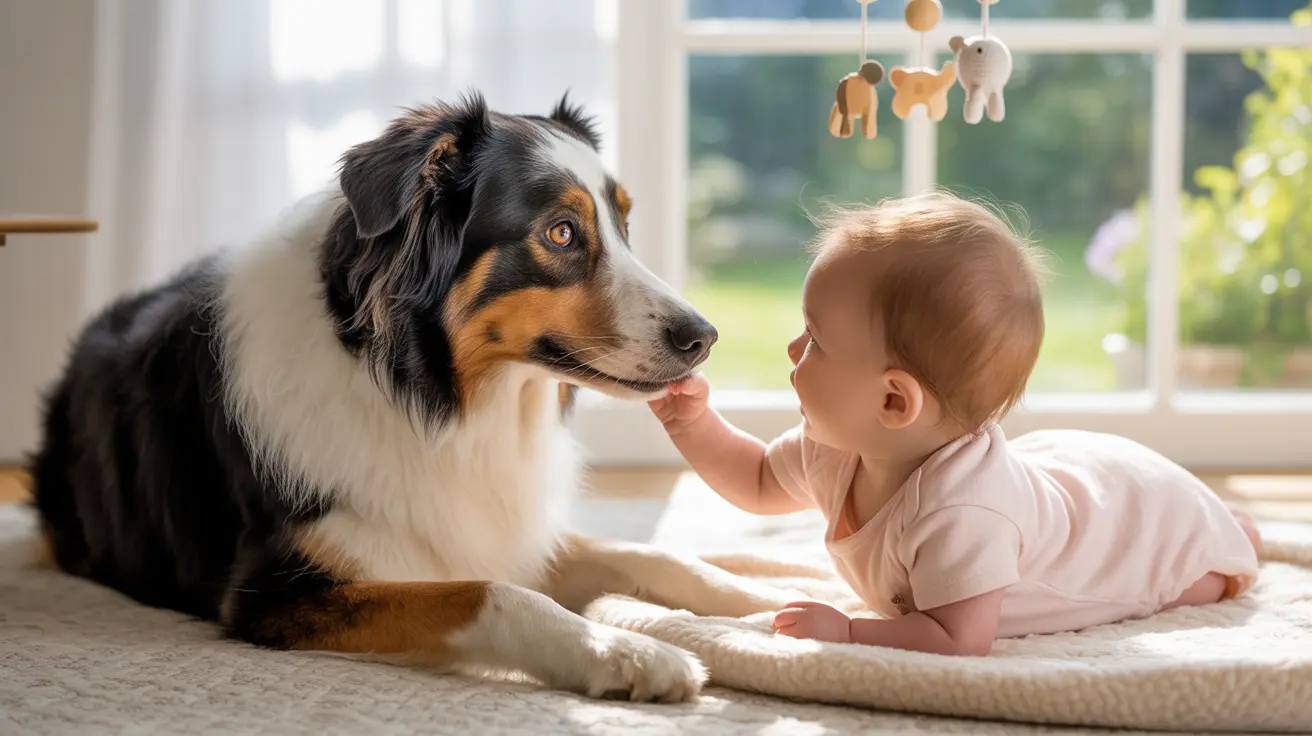Many pet owners are fascinated by their dog's seemingly intuitive understanding of babies. While dogs may not conceptually understand what a baby is in the same way humans do, they demonstrate remarkable abilities to recognize and respond appropriately to infants. This comprehensive guide explores how dogs perceive, interact with, and protect human babies.
Research suggests that dogs possess sophisticated sensory capabilities and social intelligence that enable them to distinguish babies from adults. Through a combination of instinct, learned behavior, and evolutionary adaptation, most dogs exhibit unique responses to infants that reflect both curiosity and caregiving tendencies.
How Dogs Perceive and Recognize Babies
Dogs rely on multiple sensory inputs to identify and respond to babies. Their extraordinary sense of smell—up to 100,000 times more sensitive than humans—allows them to detect the unique scent signature of infants. Additionally, they pick up on visual and auditory cues that set babies apart from adults.
Visual differences such as size, movement patterns, and facial features help dogs recognize that babies are different from adult humans. The high-pitched sounds and irregular movements typical of infants also trigger distinct responses in dogs.
Natural Instincts and Protective Behaviors
Many dogs display inherent protective instincts around babies, often exhibiting behaviors similar to how mother dogs treat their puppies. This can include gentle investigation, careful monitoring, and protective positioning near the infant.
These instinctual responses are believed to stem from dogs' evolutionary history as pack animals, where protecting vulnerable members enhanced group survival. Centuries of domestication have further refined these protective tendencies.
Social Learning and Adaptation
Dogs are exceptional observers of human behavior and often take cues from their owners regarding appropriate interactions with babies. When they witness their human family members being gentle and attentive with an infant, they frequently mirror these behaviors.
Positive reinforcement and consistent training can help dogs develop appropriate responses to babies, while early socialization with infants and children often leads to more successful long-term relationships.
Safety Guidelines and Best Practices
Despite dogs' natural ability to recognize and respond gently to babies, safety should always be the primary concern. Never leave dogs unsupervised with infants, regardless of the dog's temperament or previous behavior.
Gradual introductions, maintaining routine, and rewarding calm behavior can help ensure positive interactions between dogs and babies. Professional guidance may be necessary for dogs showing signs of stress or anxiety around infants.
Frequently Asked Questions
How do dogs recognize the difference between babies and adults?
Dogs use their superior sense of smell, along with visual and auditory cues, to distinguish babies from adults. They detect unique infant scents and respond to babies' distinctive movements and sounds.
Why are dogs often gentle and protective around babies?
This behavior stems from both instinct and social learning. Dogs' pack mentality includes protecting vulnerable members, while positive reinforcement from owners helps shape appropriate responses to infants.
What signs show that a dog is comfortable or stressed around a baby?
Comfortable signs include gentle tail wagging, calm observation, and relaxed body language. Stress signals include growling, avoiding eye contact, excessive panting, or attempting to leave the situation.
How should I safely introduce my dog to a newborn baby?
Begin with gradual exposure to baby-related items and sounds before the birth. When introducing them, maintain control of the dog, reward calm behavior, and never force interaction. Always supervise all contact.
Can having a dog around help with a baby's health and development?
Yes, research suggests that growing up with dogs can strengthen children's immune systems, reduce allergy risks, and support emotional development. However, proper supervision and safety measures are essential.
Understanding how dogs perceive and interact with babies helps create safer, more positive relationships between our canine companions and human infants. While dogs may not comprehend babies in the same way we do, their natural instincts and ability to learn appropriate behaviors make them capable of forming special bonds with the youngest members of their human families.






